Tap water is unsafe because it is a cocktail drink infused with chemicals, including fluorine and chlorine, endangering health, so people are constantly looking for ways on how to make distilled water, which does not, at all, requires a tedious, technical process but only a couple of simple steps and techniques we’re about to share with you.
[the_ad_placement id=”in-text-1-type-r”]And now, as part of this guide, we find that telling you a little bit more about tap water and its company (spring water, purified water, rainwater…) is integral for you to have a clearer picture on the importance of making distilled water as your drink of choice and not any other types of water. Aside from tap water containing chemicals as mentioned, it’s a host of lead and other dangerous metals (mainly coming from the water pipes where water passes through before getting into your faucet).
With all these harmful elements leaching in the pipes and eventually being consumed by your family, including children, you may now have a better idea on why distilled water should be your top drinking water source. You can find an informative article that we shared which gives tips on how to purify water.
Now, not only tap water is to fear, but also spring and well water (when outdoors). From time to time, you may not have access to drinking water and you may not have the chance to bringing enough bottles of water to drink while you’re out camping, trekking or simply enjoying the outdoors for a family adventure, weekend hike or outdoor camping with peers.
Spring and well water aren’t, at all, guaranteed for freshness, purity and safety because these sources are polluted, as they host manmade chemicals from farms, factories and lawns, to name a few. And when these leak into spring or well water, you know what’s next—it is unsafe for drinking.
And then there is filtration/purification method in which chemical passes through while the residues remain, becoming toxin sources. But, well, you will still find quality claims from vendors who may not be reliable because they may still be using outdated systems which fail detecting poisons from purified water (?).
Distill water and keep safe
Fearing for your family’s health because tap water isn’t safe or because well/spring water equally is unsafe, it is time you learn distilling water in a pot using some ice. You need no laboratory or expensive equipment, but you will learn distilling water without any hassle of spending money or following any complicated tutorials.
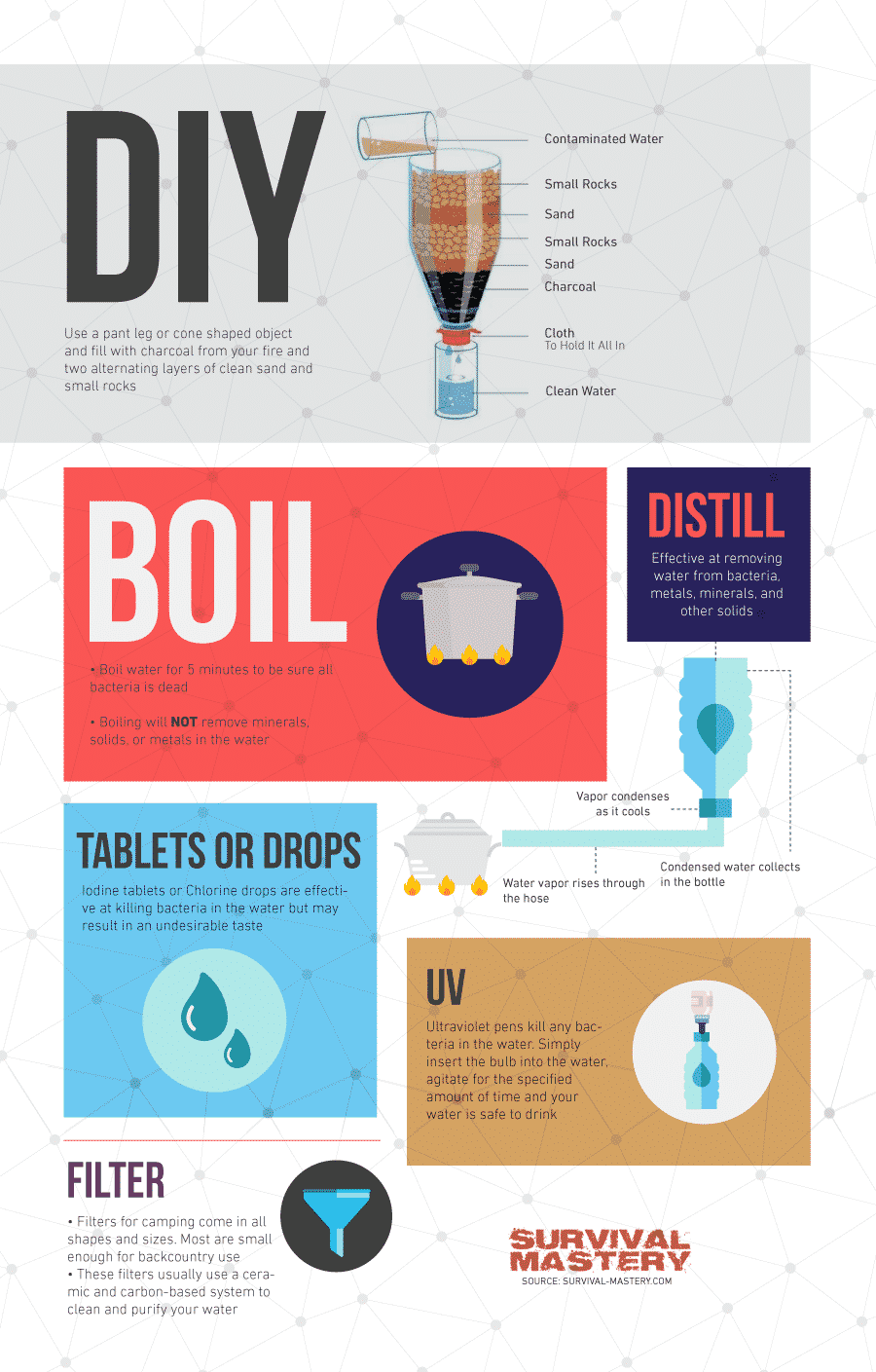
To begin with, learning ways of distillation will keep you from consuming water with lead buildup, impurities (including human sewage) and all other pollutants to imagine (think of factory chemicals and wastes flowing into the rivers, lakes and seas), while at the same time distillation does not only remove toxins and harmful waste deposits in water, but it also makes drinking water a real means of SURVIVAL—especially when outdoors.
Many people would think that drinking water approved by the Environmental Protection Agency is safe water, but not at all. In fact, tap water is said to be one of the biggest health risks of modern people because even if it is categorized ‘safe’ does not mean it is ‘healthy.’
In fact, to give you more information, tap water contains loads of arsenic, radioactive particles and mercury, aside from lead, and all other poisons you could think of. And to give you a better idea, more than 75,000 of chemical compounds (and more added and unregulated every year) are in use by agricultural, commercial and industrial sectors.
Eighty percent of such chemicals have never been studied for chronic toxicity levels, and because of that, it is said that about 20 billion tons of radioactive wastes, chemicals and pollutants are brought out into the environment annually. Without even saying, you could imagine these toxic substances reaching our home’s water supply.
And because local water treatment facilities cannot and does not have the power of removing all toxins in tap water, the only choice we have is to purify our drinking water through distillation.
How distillation works
There are, in fact, several methods for distilling water, but it mainly involves boiling water to produce vapor, which eventually leaves contaminants behind. And when the water vaporizes entirely, vapor goes straight into a clean container, which then turns vapor (air) into its condensed form (liquid/water). In this case, distilling works differently with just boiling that only works to remove a few toxins.
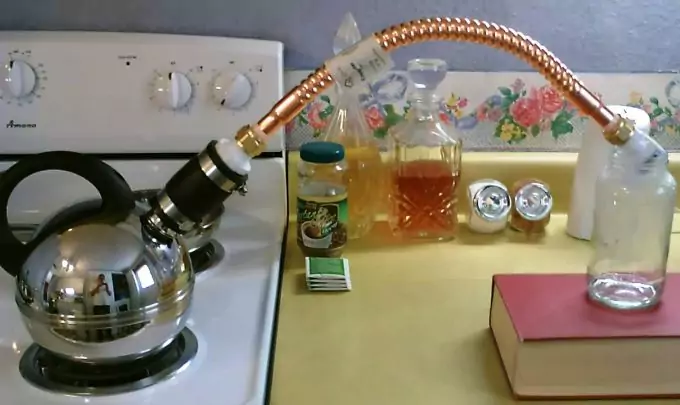
Now you may be thinking that rainwater then is pure (distilled) water. In truth it is! Rainwater involves all the processes we have mentioned above, falling as pure water to earth through precipitation. So you may be asking, “Is rainwater safe to drink then?” The answer is a resounding “NO.” Long ago, rainwater was drinkable, but not now. You can just imagine ‘chemicalization’ of things and so merely passing in the polluted atmosphere makes rainwater 100% UNSAFE.
Distilling water with a stainless pot
Here, you don’t need to learn how to make a water distiller, but you merely need 3-5-gallon capacity stainless steel pot. Then, get ready with tap water, baking rack, ice and heat-resistant glass bowl. Let’s begin.
Get your baking rack on the bottom of your pot and then fill it up with tap water halfway. Put your glass bowl into the pot, making it float on the water surface. Remember that your baking rack has to support the glass bowl so it does not touch the pot’s bottom. Get your pot cover and turn it upside down before putting it on top of your stainless pot. Fill this inverted cover with some ice. Let the water boil for about 45 minutes and put some more ice as needed because ice turns to steam when boiled.
Following is steam hitting the pot’s cold lid and cooling to condense, turning into water once more. Water drops into the glass bowl, making DISTILLED WATER.
[the_ad_placement id=”in-text-2-type-r”]Switch the stove off and remove the pot’s lid and take out the glass bowl carefully using a pair of gloves. Let the distilled water cool down and transfer it into water bottles, preferably using only sterilized containers. Else, immersed the bottles in boiling water for a couple of minutes before storing the distilled water you made. Make sure water containers are designed for long-term use because some containers aren’t safe to use for storage, as they host bacteria that leach into them over time.
Distilling water on the stove/grill
This works closely similar with the first method, except that water is collected in an outside container. Well, you can get all creative when making distilled water, and this is one of those ways. Be sure you are collecting the distilled and not the pot water.
To do it, use a funnel, attached with aquarium tubing, but then for the funnel to work draining water into the collection bottle, you may want to empty the tubing positioned at a lower level than that of the funnel. One good advantage of this technique is that you don’t have to wait for the pot to cool (especially when outdoors) and that this technique can reduce contamination risk coming from the source.
Well, contamination isn’t a big issue when you’re using tap or rain water but it may be if you’re going to use non-potable water to distill.
Distilling water from snow/rain
Interestingly, you can make distilled water using snow or rain. They can be two options when outdoors and you don’t get access to clean drinking water. Water that evaporates from the earth’s lakes, oceans and rivers, then condenses into the atmosphere and finally falls as rain (precipitated form).
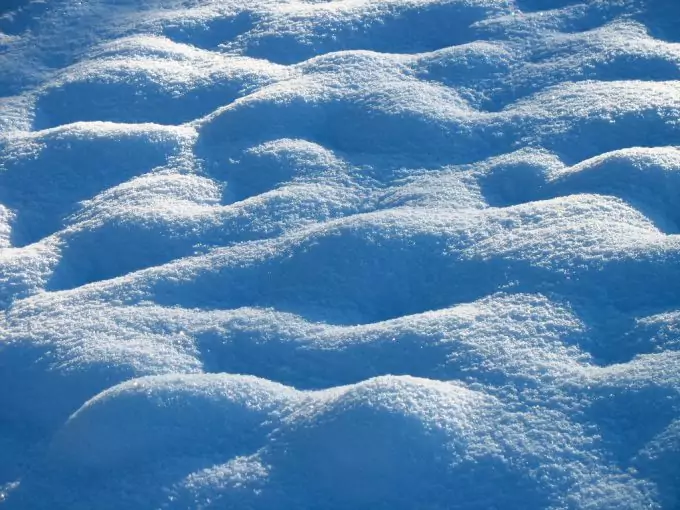
Collect snow or rainwater in a clean container, and then allow a day for any sediment to settle at the bottom. In many cases, you can pour off the clean water to drink by boiling it or using a coffee filter. Although distilled water is best refrigerated in most cases, you can still keep it safe by storing it in a sealed, clean container.
Distilling water from plants
When you’re out and facing an emergency situation and you are nowhere near potable water sources, you can still distill any water sources, understanding all the potential setups out there. What you need are green plants, a coffee can (or any clean container), a small rock and a plastic wrap.
First, dig a hole in the ground, enough to accommodate your container in its center. Pile up damp plants into the hole and just around the container. Cover this hole with your plastic wrap, securing it with rocks. Make sure no moisture will escape. Put a pebble in the middle of the plastic wrap for making a little depression.
When the water starts evaporating, vapors coming from it will condense on the wrap, falling where you made a depression and then into the can. Although this is quite time-consuming, this may be your only choice when stranded in places without potable water sources.
But to speed up the process, maybe you can dig a hole where the sun shines directly, causing heat to be trapped inside due to greenhouse effect taking place inside the plastic, accelerating water evaporation. To keep the process going, you may add a few more fresh plants, including cacti and ferns, except poisonous ones loaded with volatile toxins.
Distilling seawater
A gulp of ocean water, which is salty, may not be a good idea, the more if you overdo and drink too much of it, as this will cause immediate dehydration due to high salt content of the water. Aside from it making you thirstier, it will eventually dehydrate your body, something lethal to avoid.
https://youtu.be/bTMl2Ua6z2o
A great way of ridding off the salt from seawater is through distillation, meaning heating the water until it is boiling to turn into steam, which is then accumulated into another container. When this steam cools down and returns to liquid form, it is now distilled/pure H2O.
Also see: Does Boiling Water Purify It? Securing Safe Water Sources
What you have to do is to fill your pan and put an empty, clean glass in the center of it. Pour in saltwater and stop when it reaches the glass’ mouth. Ensure that no seawater gets into your glass. Put the cover of the pot upside down so that the highest point can be positioned just right above while facing your container. Work your fire and start boiling the water. The water boils and becomes steam, re-condensing in the surface of the pot cover and then falling right into your container.
As the water boils, only pure steam will be collected into the container, while all the contaminants and salt will be left behind. Wait for a couple of minutes for water to cool down before drinking it. And to make the re-condensation faster, you can start cooling down the pan’s cover while the water is still boiling.
Distilling urine
Wait. Did we say urine? Yes, you can distill and purify urine and make it drinkable, especially when you are stranded in an isolated or remote location where access to clean water is next to impossible. Now you don’t have a pot? That’s not a problem! You can just dig in a hole and urinate into it.
Put a container/glass in the middle of the hole and cover it with something (e.g. plastic). If you’re in the desert, condensation may be faster because the sand’s natural heat will evaporate the clean water into the glass/container. Alternatively, you can tie this cup into the lid of the pot for collecting water, or you can make use of a drinking tube running from your cup to the surface where to drink from to avoid removing the cover and the container out.
Distilling water with glass bottles
Get two clean empty glass bottles to make distilled water anywhere you are. This method can work best if one of the bottles you have can curve outside from its neck to prevent the steam water from going back into the other bottle.
Get one of the bottles and fill it up with tap water, and then stop when it reaches 12.7 centimeters from the bottle’s top. Combine/join the two glass bottles at their neck and then get a duct tape for securing them tightly together. And then get a stainless steel pot to fill up with just sufficient water for covering the bottle that you filled with tap water earlier. Now, tilt the two bottles at about 30 degrees, while the empty bottle is leaning on the inside of your pot’s rim, a suitable angle for collecting the steam water.
[the_ad_placement id=”in-text-3-type-r”]Get an ice pack and rest it on the top of the empty bottle, allowing the creation of cold/hot barrier to evaporate water in the bottle filled with tap water, which will then condense in your cooler bottle. Keep the process going until enough of distilled water is collected inside the bottle.
Distilling water through passive solar solution
Being powered by the sun, passive solar distillation does not require any fuel or electricity at all, something very practical if you’re looking to collect and store distilled water at home without shelling out money on expensive equipment. Solar distillation purifies by removing only the water.
The process of distilling water takes advantage of the concept that the chemical compounds vaporize at certain temperatures, and the most potential of chemical contaminants in water, obviously, have higher vaporization requirements than water. But when using passive solar method, you can have pure water to get into the collecting container, while it leaves all contaminants behind.
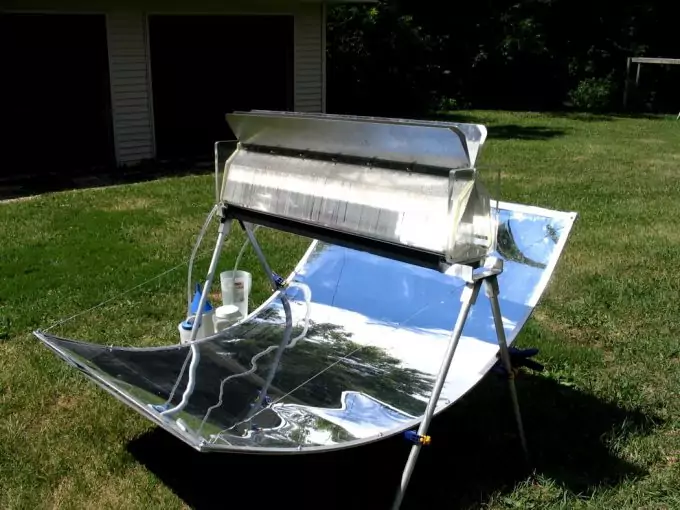
The basic action of this solar distiller could be removing salts, bacteria and heavy metals from water. In fact, according to a designer of solar distillers, Horace McCracken, certain lab tests have shown that these distillers can also take out the dry-cleaning chemical ‘trichloroethylene’ as well as the nitrates (both carcinogens) from the water source. And then a good basic distiller that could be paired with a carbon finish filtration system can certainly then remove any byproducts, including chlorine for a clean, safe drinking water.
Instant distilled water with kits
For many households who want to make a one-time investment on distiller kits to save on electricity and fuel heating the water source, they settle for distillation equipment. They use it for making distilled water at home anytime, but prices of such kits could play anywhere at least $100 depending on make and model.
If you’re deciding for this option, you can go online and compare prices before buying. To tell you, bigger kits used in laboratories and distilleries to distill massive volumes of waters or supplying an entire home cost much, much higher than ordinary kits.
Learning ways on how to distill water could be a life-saving skill to possess and definitely one of our survival guides to bookmark on your browser. You can use this comprehensive tutorial on the various distillation methods to make water potable and safe. Distilling water—in the jungle, in an island, under rock crevices or in any remote places where clean water is nowhere accessible—could be your way to survive another day until you are rescued from an emergency situation.
Check out our tips on how to properly store water to keep your protected and safe.


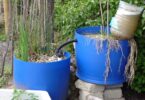
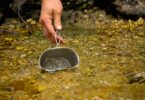
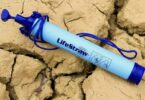

In my opinion the best and the easiest way to make water clean enough to drink is diy it. Even children can do it by themselves if, of course, elders show them how to build such kind of filter.
You can take not only empty bottles for constructing such filter, but different natural objects such as wood, bamboo and so on. Sand, small rock and coal are easy to find.
That’s great thinking, thank you for sharing your opinion with us.
As far as I’m concerned really distilled water is not useful for drink. Drinking it can even lead to death. I insist on it because I’m chemist and I know that water needs to lead electrolytic functions. Without any salt in it it impossible. But methods described here are rather useful: it’s not really about getting distilled water but drinking water. Especially I like the first one: quite easy and clean.
You said distilled water can kill you. But then couple of sentences later you said it is for drinking. I am confused….
He mentioned “methods” being useful for drinking water, which is not limited to distilled water but, if he was specifically addressing the methods of distillation, I would assume he is implying that drinking distilled water is acceptable as a short-term water source, not for a prolonged period of time, considering distilled water will slowly rob your body of the necessary minerals for proper function, thus resulting in eventual death. Surely, this is an extreme case, such as a person having limited access to food and quality drinking water.
Indeed, through distillation, the water loses most of its useful minerals and becomes more pure than the regular drinking water. These methods are more of a short term solution when you don’t know if the source has been contaminated and you shouldn’t risk drinking without applying a purification method.
That is correct. Drinking water without minerals, electrolytes, as a longterm practice will eventually kill you. It would be ok in the short term emergency. I use it for my CPAP machine, coffee maker and iron. Strangely, none of my local stores has been a reliable source recently for distilled water. I don’t know if it is the supply chains during covid. Evelyn, RN
Thank you for the insights. Covid has disrupted the supply chain for a lot of basic necessities. I think a lot of it is attributed to labor – warehouse workers and truck drivers and the difficulty in finding them.
Indeed there are distillation equipment available (I have one for years now and never regretted buying it). But I guess when there’s no electricity around (camping but also power outage emergencies), this guide is very useful.
Samuel, I found the distillation process thru plants interesting but how time-consuming is it? I’d like to know how long I have to wait to have safe drinking water.
You cannot estimate the exact time your distilled water will be ready. Most distillation methods take a considerable amount of time.
I have seen the filter system used in survival shows from the Discovery Channel and I became curious about water distillation. I guess here are a lot of ways you can produce distilled water depending on the resources that are available to you and depending on this situation. I will try to do the simple set-ups shown in here so that I can be prepared to do them during emergencies.
Is the first set-up shown, which uses layers sand, stones, and charcoal a distillation process? Is the water that comes out of the device safe to drink? I always thought that producing clean water from dirty water involves boiling it, but I guess I was wrong since there are many ways that have been shown here.
The setup is part of the distillation process. Of course, there are numerous ways of purifying contaminated water for drinking apart from boiling.
Boiling is surely time consuming and probably expensive because of fuel, for some people. Personally, I would go with the iodine tablets or chlorine drops, especially in the wild. However, the article offers other alternatives that you can try.
There have been multiple techniques and different tools to purify our drinking water. Some are quite complex to use and others are simple. Despite the many ways that we have, what could be the best distillation process that ensures clean, odorless, and safe water? Will the vapor distillation process do?
There are several ways of making distilled water at home, and we have covered the most resourceful methods in this article. All you have to do is choose one that works for you.
Drinking pure, clean H2O (distilled water) will NOT kill you; get ORGANIC minerals from food that your body can use.
However, drinking water contaminated with bacteria, viruses, INORGANIC minerals and heavy metals that your body cannot use will wreak havoc on your body.